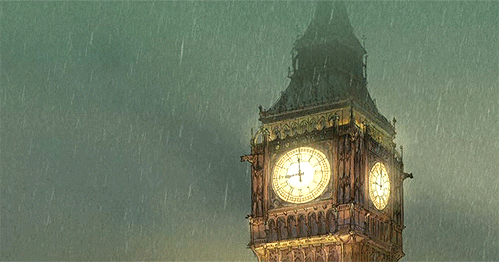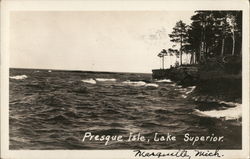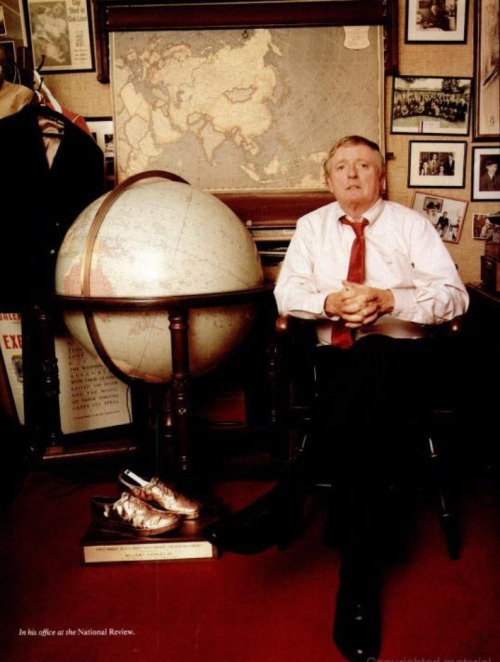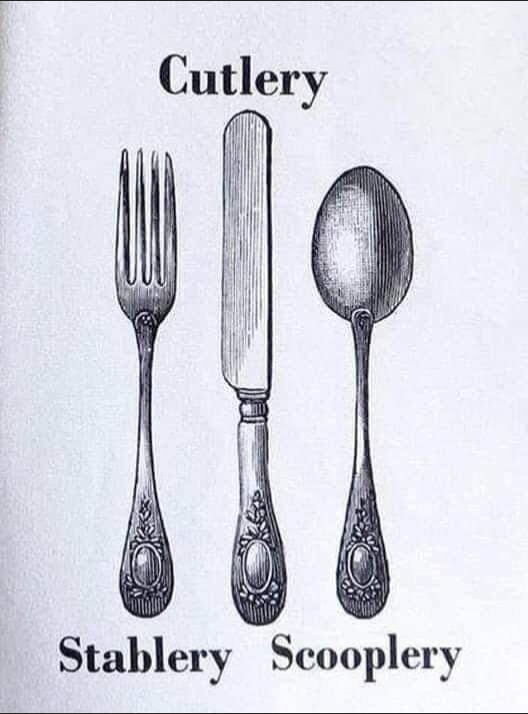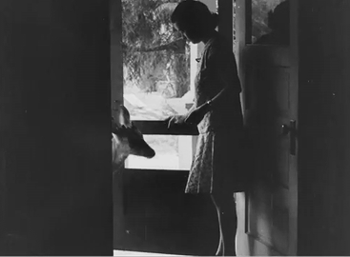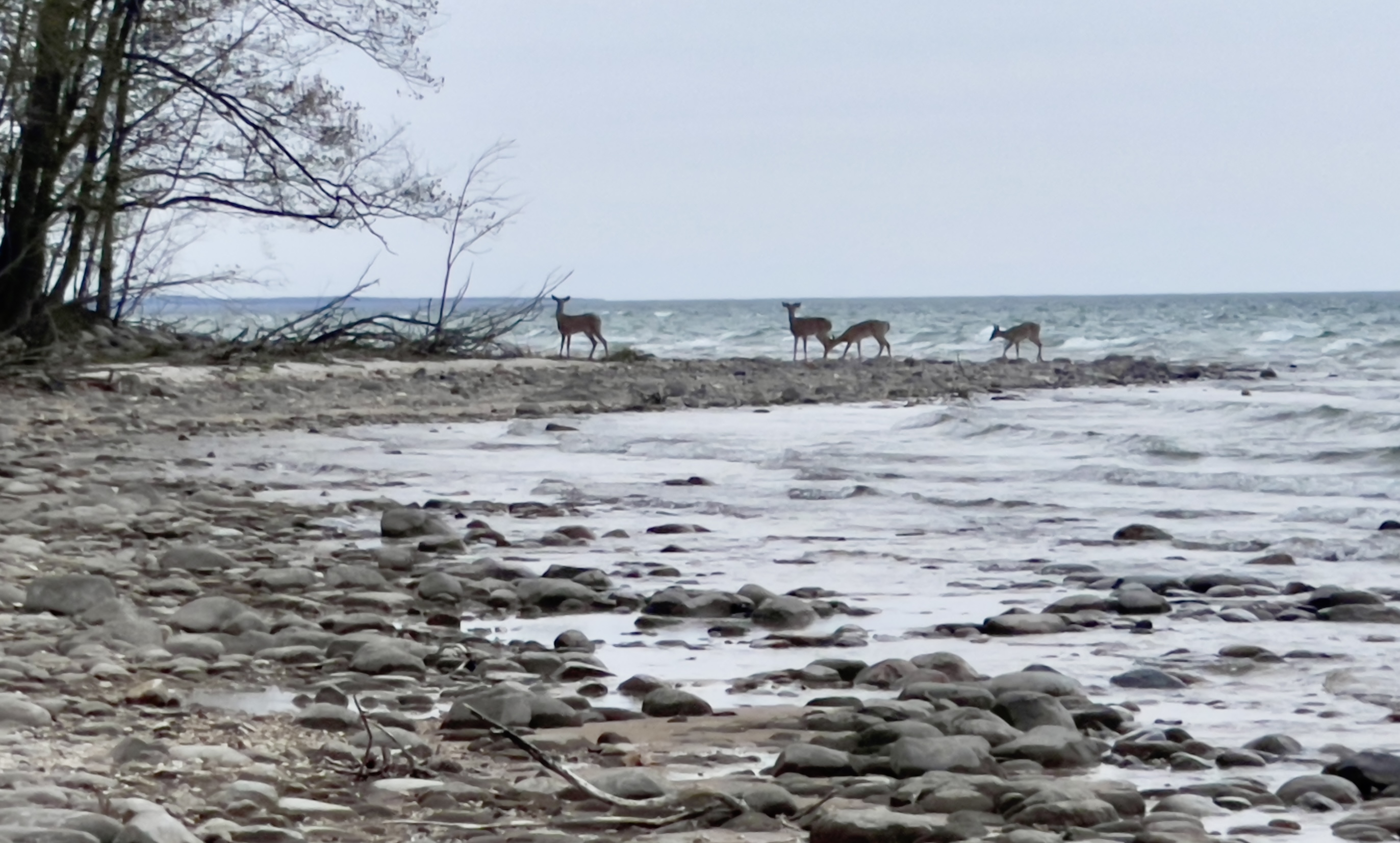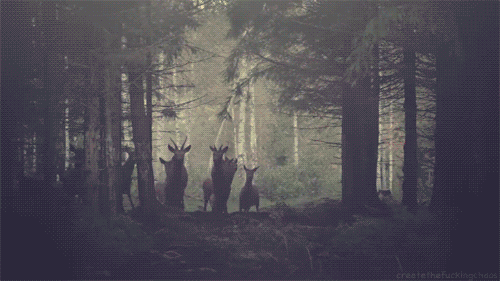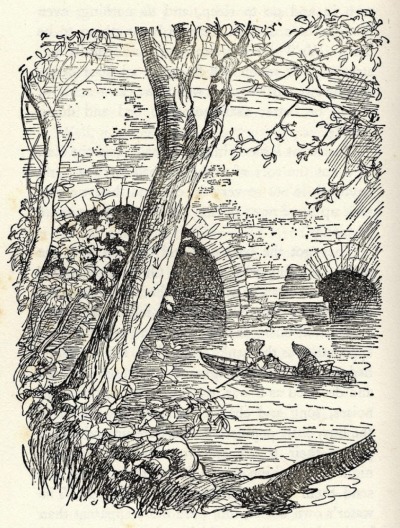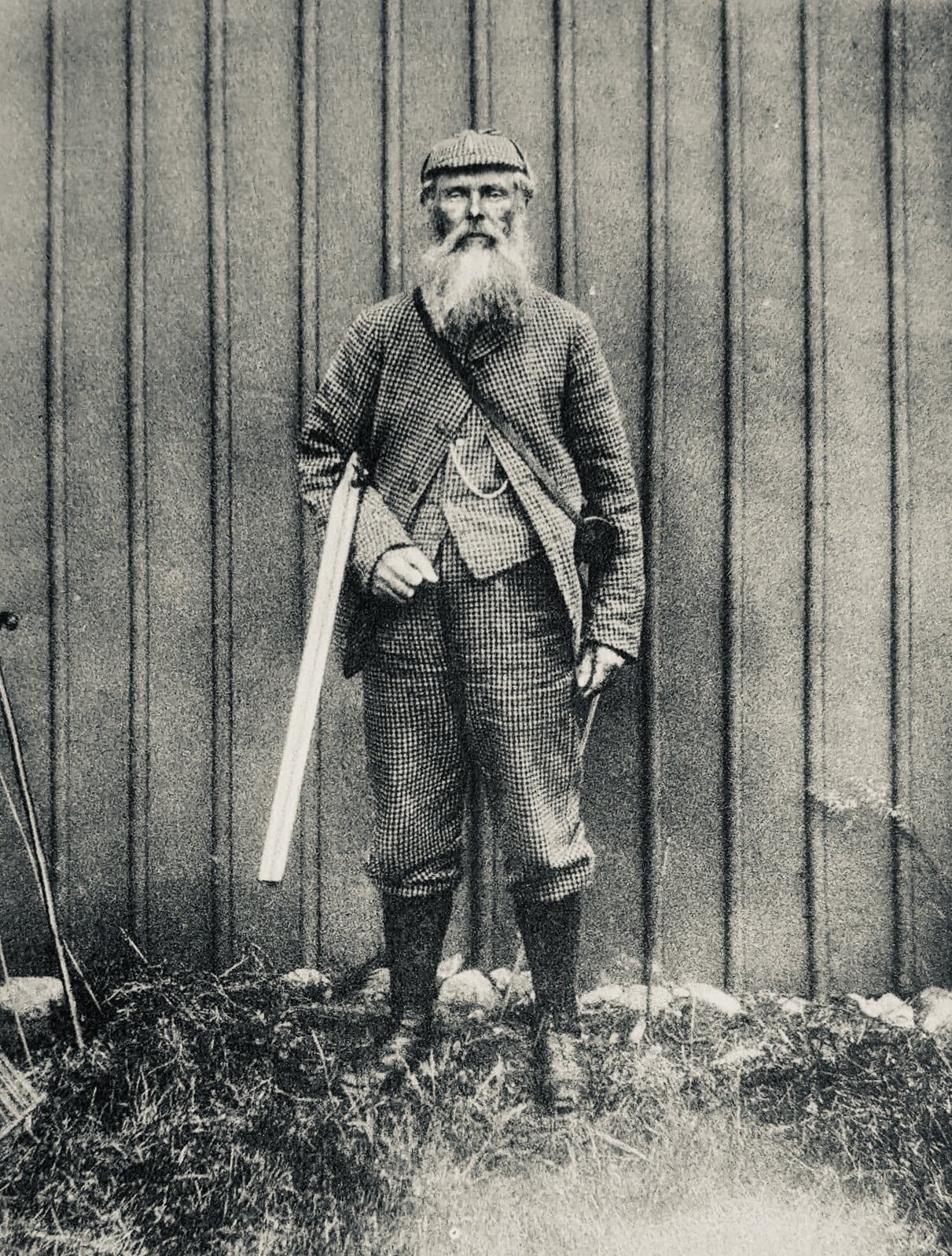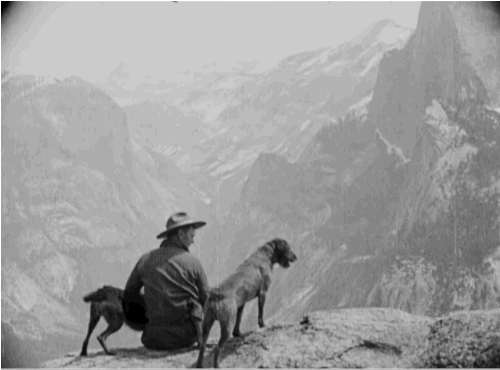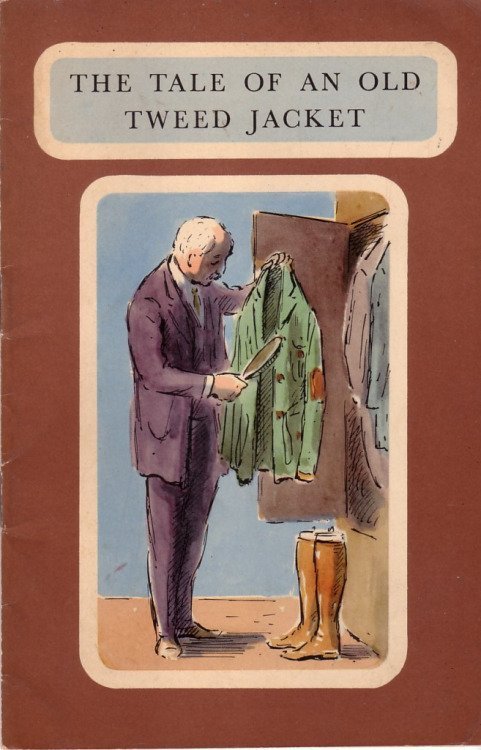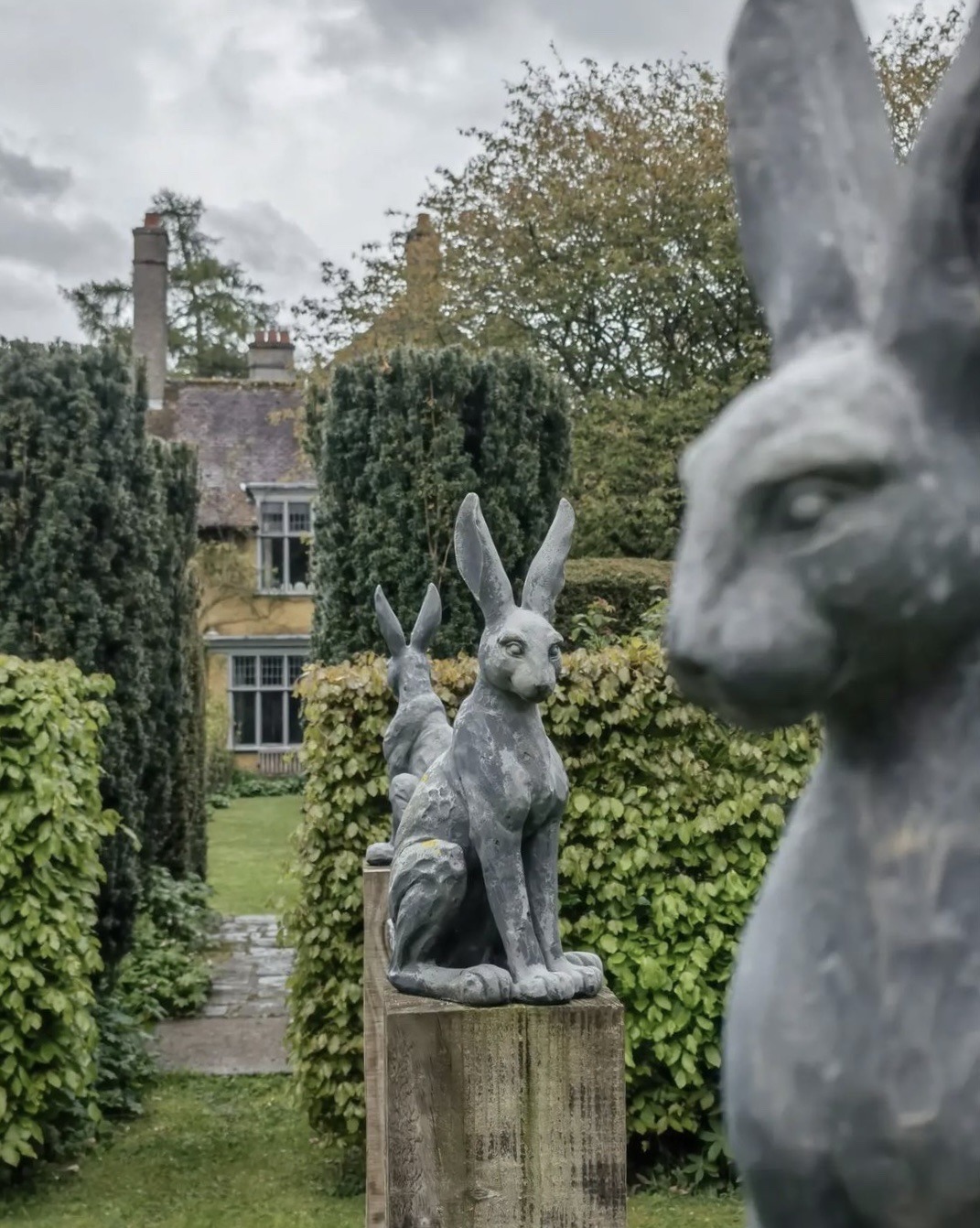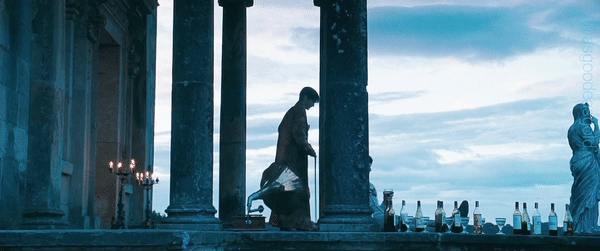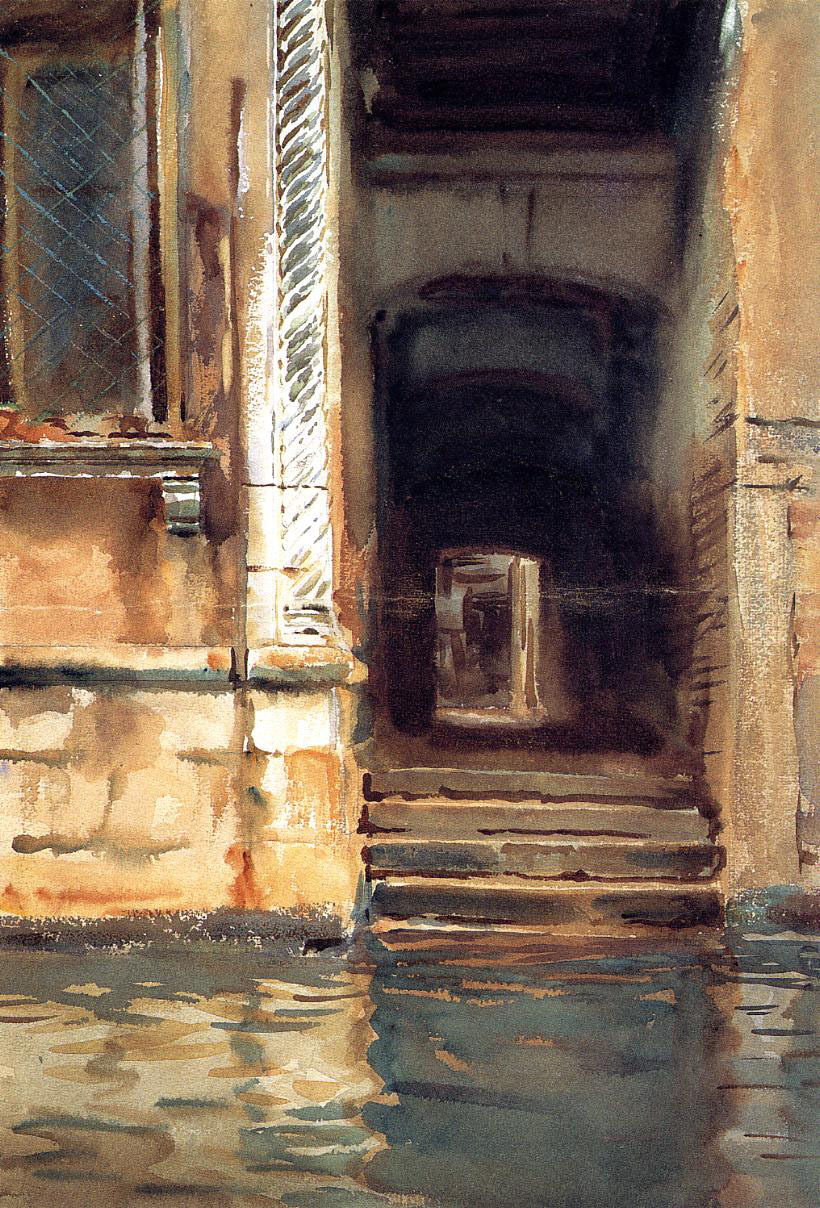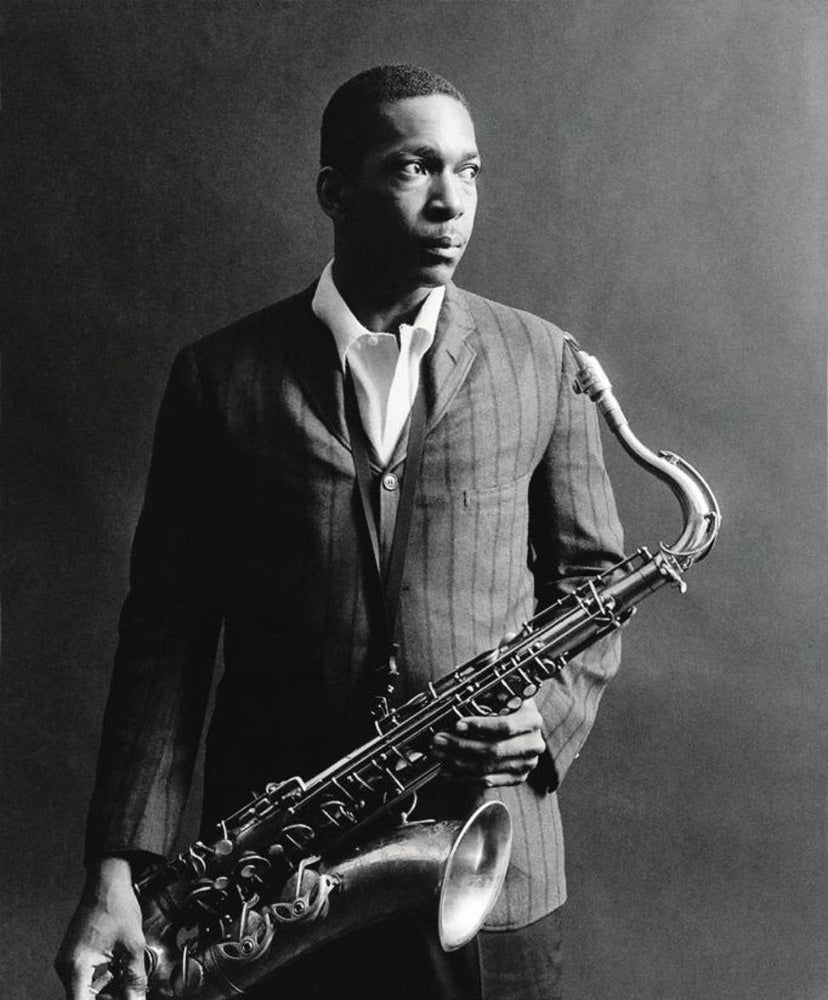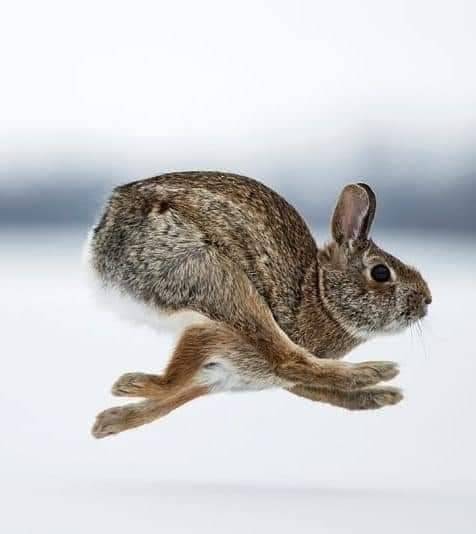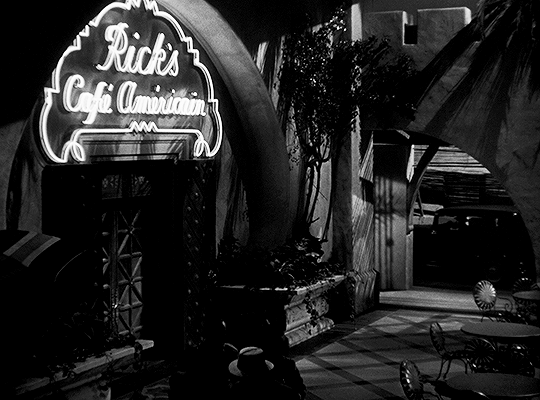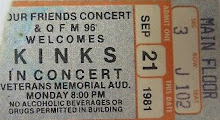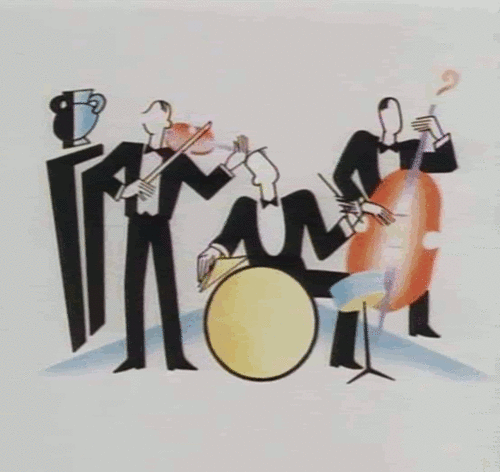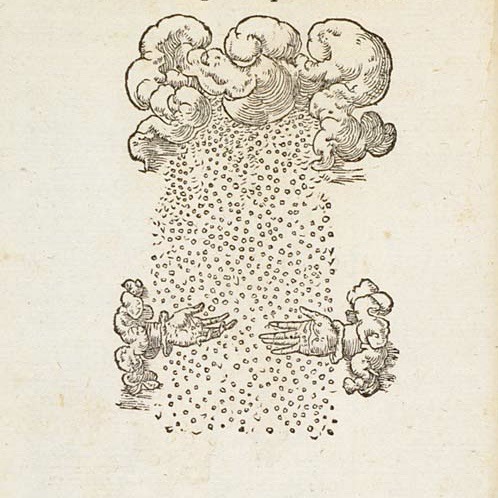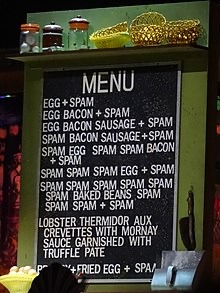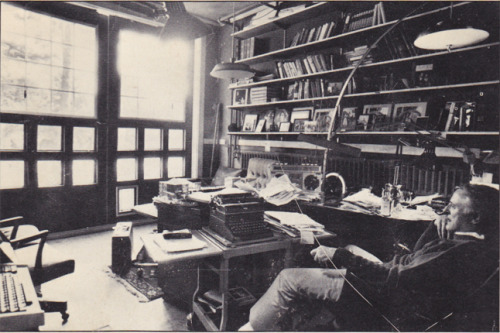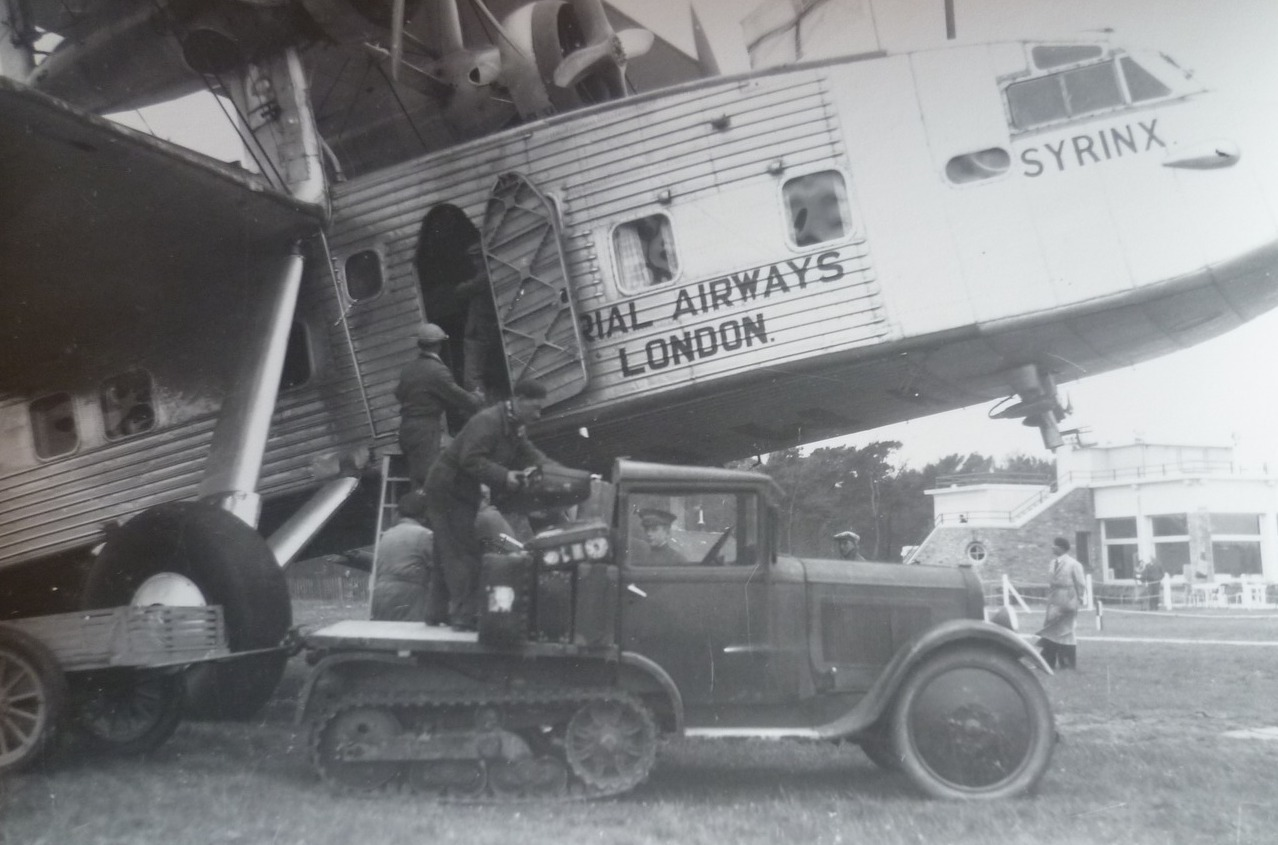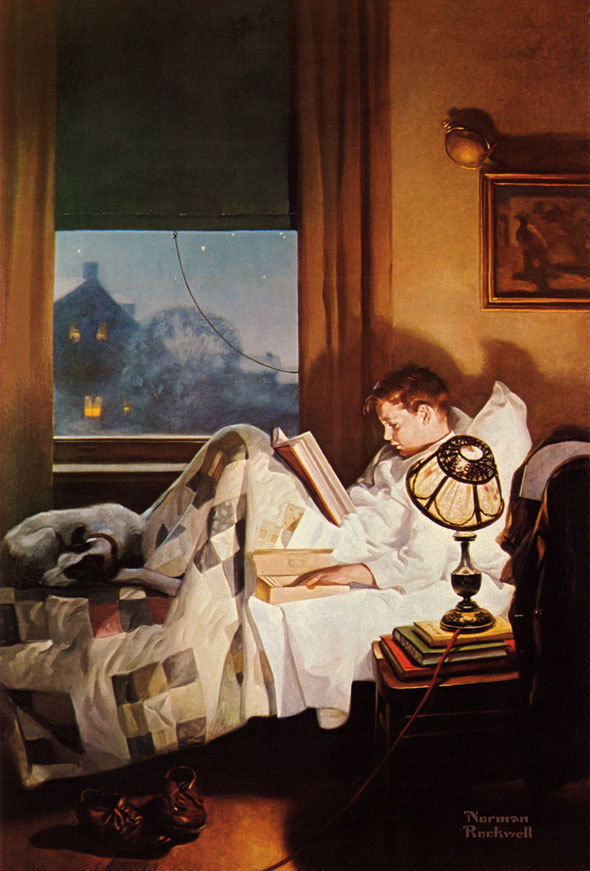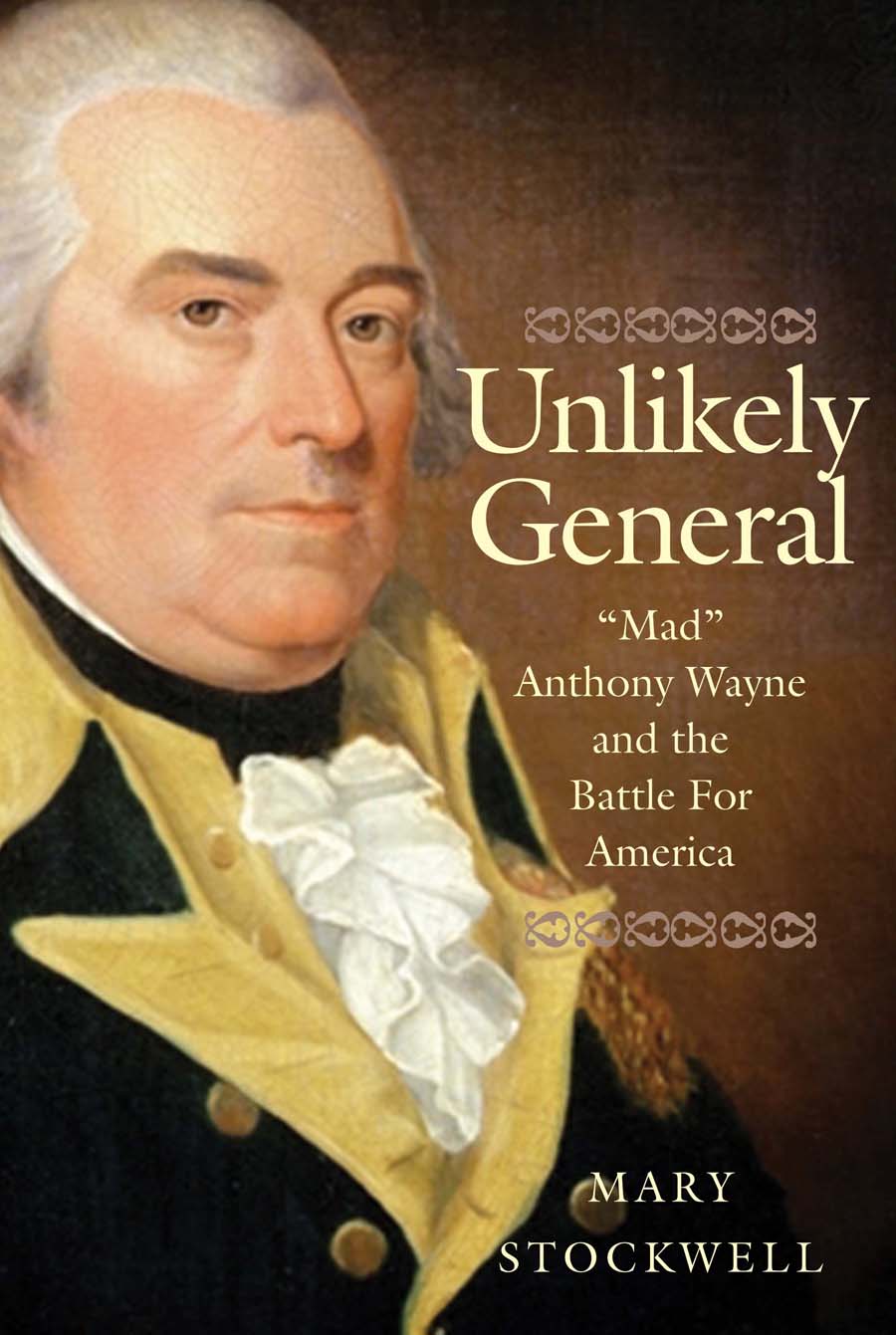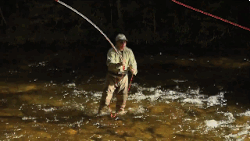26 December 2008
Jerry Jeff Walker, Contrary To Ordinary
I never live my life through other people's eyes
I guess I've always been the one they said was
Too tall, too late, too early
Yeah, he's the one
You ought to be in the circus
You're having too much fun
Just a one-man band, a one man gypsy circus
Finding out each piece of the puzzle has a purpose
Drifting and dreaming
Yeah, that must be my fate
Always grinning down the devil's throat
Blazing with aces and eights
And I was contrary to ordinary
Even as a child
Fast freights made me wonder
The full moon still drives me wild
And stories do come true
You just got to live your life in episodes
With one eye on a lady
And one eye still on that open road
And when I die don't put no tombstone on my grave
Just have my friends throw a great big party
Toss my ashes out across the waves
Don't bring no preacher man down
Just to tighten up my past
Just tell 'em how I like to live
I like to make sing and dance and laugh
And I was contrary to ordinary
Even as a child
Fast freights made me wonder
Full moons still drive me wild
And stories do come true
If you live your life in episodes
With one eye on a lady
And one eye still on that open road
Irving's Christmas Dinner

The dinner-time passed away in this flow of innocent hilarity, and, though the old hall may have resounded in its time with many a scene of broader rout and revel, yet I doubt whether it ever witnessed more honest and genuine enjoyment. How easy it is for one benevolent being to diffuse pleasure around him; and how truly is a kind heart a fountain of gladness, making every thing in its vicinity to freshen into smiles! the joyous disposition of the worthy squire was perfectly contagious; he was happy himself, and disposed to make all the world happy; and the little eccentricities of his humor did but season, in a manner, the sweetness of his philanthropy.
Read the final installment here. Merry Christmas and a Joyous New Year!
25 December 2008
Irving's Christmas Day

"I love,” said he, “to see this day well kept by rich and poor; it is a great thing to have one day in the year, at least, when you are sure of being welcome wherever you go, and of having, as it were, the world all thrown open to you ..."
Read the rest here.
22 December 2008
Washington Irving's, Christmas Eve

As we approached the house, we heard the sound of music, and now and then a burst of laughter, from one end of the building. This, Bracebridge said, must proceed from the servants’ hall, where a great deal of revelry was permitted, and even encouraged by the squire, throughout the twelve days of Christmas, provided every thing was done conformably to ancient usage. Here were kept up the old games of hoodman blind, shoe the wild mare, hot cockles, steal the white loaf, bob apple, and snap dragon: the Yule clog and Christmas candle were regularly burnt, and the mistletoe, with its white berries, hung up, to the imminent peril of all the pretty housemaids. The mistletoe is still hung up in farmhouses and kitchens at Christmas; and the young men have the privilege of kissing the girls under it, plucking each time a berry from the bush. When the berries are all plucked, the privilege ceases.
Read the rest here.
21 December 2008
Don Edwards, Coyotes
A great song from the the film soundtrack, Grizzly Man. The film is an account of a idiot named Timothy Treadwell, who went to Alaska to raise awareness of the plight of the grizzly by living with them. The bears eventually ate him.
Coyotes is the lone vocal track of the album of otherwise Richard Thompson instrumentals. Skip the narcissism of the movie. Get the soundtrack here.
American Genocide
Denial or ignorance of the genocide inflicted upon the Native cultures of this country over the past 500 years is shamefully inexcusable. To point toward the German Third Reich or contemporary Sudan with elitist disapproval is an act of arrogance and stupidity akin to Ku Klux Klan demagoguery.
Purchase this important documentary here.
15 December 2008
The lowest trees have tops

As I drove to work this morning in the not-quite-dawn darkness and heavy rain, Sting's latest, Songs from the Labyrinth, played on the hi-fi of my jalopy. It was perfect. The austerity of the Elizabethan composer, John Dowland, fit the morning drive perfectly.
If this interests you, pick up a copy here. Be sure to get the CD/DVD collection, as the footage of the lute that Sting was given as a gift is worth the price alone. The labyrinth carved in the sound hole is astounding.
14 December 2008
Past Three O'Clock and A Cold and Frosty Morning

Past Three O'Clock
Lyrics by G.R. Woodward
Past three o'clock,
And a cold frosty morning,
Past three o'clock,
Good morrow masters all.
Born is a baby
Gentle as may be,
Son of the Eternal
Father supernal.
Seraph choir singeth,
Angel bell ringeth,
Hark how they rhyme it,
Time it and chime it!
Mid earth rejoices
Hearing such voices.
Ne'ertofore so well
Carolling nowell!
Hinds o'er the pearly
Dewy lawn early
Seek the high stranger
Laid in the manager.
Cheese from the dairy
Bring they for Mary,
And, not for money,
Butter and honey.
Light out of star-land
Leadeth from far land
Princes, to meet Him,
worship and greet Him.
Myrrh from full coffer,
Incense they offer;
Nor is the golden
Nugget withholden.
Thus they: I pray you,
Up sirs, nor stay you
'Til ye confess him
Likewise and bless him.
Two great performances here and here.
Endure courageously!

Slate has an article entitled, How the Illuminati influenced Beethoven. It focus is on the prodigy, and the influence of Schiller's Ode.
One of the things it all added up to was something like this: music as an esoteric language wielded by a few enlightened men for the benefit of the world. Beethoven was all about duty to the abstraction called humanity. That was what he was taught and what he lived and wrote for, through all the miseries of going deaf and a great deal of physical pain. It was people he didn't much care about. But in taking up Schiller's Ode for the Ninth Symphony, he proposed not just to preach a sermon about the brotherhood of humanity and the dream of Elysium. He wanted the Ninth to help bring those things to pass.
Read the rest here.
I am, too!
The National Weather Service is predicting that central Ohio will have about a 25% chance of a white Christmas.
A Christmas Carol
The 1984 adaptation of Dickens' A Christmas Carol is my favorite. The rich imagery is unsurpassed in other movies and George C. Scott plays his best role since Patton.
Will you decide what men shall live, what men shall die? It may be, that in the sight of Heaven, you are more worthless and less fit to live than millions like this poor man's child. Oh God. to hear the Insect on the leaf pronouncing on the too much life among his hungry brothers in the dust.
Hmm . . . still appropriate.
Wassail! Wassail! All over the town . . .

More from Dawson ...
Wassailing the Apple-trees.
Writing on this subject, in the Antiquary, March, 1895, Mr. Harry Hems, of Exeter, introduces the reduced copy of an illustration which appears on the following page, and which he states was published in the Illustrated London News, January 11, 1851.
The picture (says Mr. Hems) "presents, as will be seen, a frosty, moonlight night, with a brilliantly-lit old farmhouse in the background. In the fore are leafless fruit-trees, and three men firing guns at them, whilst the jovial farmer and another man drink success to the year's crop from glasses evidently filled from a jug of cider, which the latter also holds a-high. A crowd of peasants—men, women and children—are gathered around, and the following description is appended:—
"'Amongst the scenes of jocund hospitality in this holiday season, that are handed down to us, is one which not only presents an enlivening picture, but offers proof of the superstition that still prevails in the Western counties. On Twelfth-even, in Devonshire, it is customary for the farmer to leave his warm fireside, accompanied by a band of rustics, with guns, blunderbusses, &c., presenting an appearance which at other times would be somewhat alarming. Thus armed, the band proceeds to an adjoining orchard, where is selected one of the most fruitful and aged of the apple-trees, grouping round which they stand and offer up their invocations in the following quaint doggerel rhyme:—
"'Here's to thee,
Old apple-tree!
Whence thou mayst bud,
And whence thou mayst blow,
And whence thou mayst blow,
And whence thou mayst bear
Apples enow:
Hats full,
Caps full,
Bushels, bushels, sacks full,
And my pockets full too!
Huzza! huzza!'
Christmas: Its Origin & Associations, by W.F. Dawson, 1902

Project Gutenberg is the first and largest single collection of free electronic books. Although I realize I would offend The Old Sage, Bloom, by saying so, I find PG a glorious treasure trove of all sorts of texts, some rare.
This morning, as I browsed, I came across the topic of this post, Christmas: Its Origin & Associations, by W.F. Dawson.
Popular Christmas festivities in the latter part of the eighteenth century are gleaned from contemporary writers:—
In Sinclair's Account of Scotland, parish of Kirkden, county of Angus (1792), Christmas is said to be held as a great festival in the neighbourhood. "The servant is free from his master, and goes about visiting his friends and acquaintance. The poorest must have beef or mutton on the table, and what they call a dinner with their friends. Many amuse themselves with various diversions, particularly with shooting for prizes, called here wad-shooting; and many do but little business all the Christmas week; the evening of almost every day being spent in amusement." And in the account of Keith, in Banffshire, the inhabitants are said to "have no pastimes or holidays, except dancing on Christmas and New Year's Day."
Boyhood's Christmas Breaking-up is thus described in a poem entitled "Christmas" (Bristol, 1795):—
"A school there was, within a well-known town,
(Bridgwater call'd), in which the boys were wont,
At breaking-up for Christmas' lov'd recess,
To meet the master, on the happy morn,
At early hour; the custom, too, prevail'd,
That he who first the seminary reach'd
Should, instantly, perambulate the streets
With sounding horn, to rouse his fellows up;
And, as a compensation for his care,
His flourish'd copies, and his chapter-task,
Before the rest, he from the master had.
For many days, ere breaking-up commenced,
Much was the clamour, 'mongst the beardless crowd,
Who first would dare his well-warm'd bed forego,
And, round the town, with horn of ox equipp'd,
His schoolmates call. Great emulation glow'd
In all their breasts; but, when the morning came,
Straightway was heard, resounding through the streets,
The pleasing blast (more welcome far, to them,
Than is, to sportsmen, the delightful cry
Of hounds on chase), which soon together brought
A tribe of boys, who, thund'ring at the doors
Of those, their fellows, sunk in Somnus' arms,
Great hubbub made, and much the town alarm'd.
At length the gladsome, congregated throng,
Toward the school their willing progress bent,
With loud huzzas, and, crowded round the desk,
Where sat the master busy at his books,
In reg'lar order, each receiv'd his own,
The youngsters then, enfranchised from the school,
Their fav'rite sports pursued."
For my money, the best entries begin around section 230.
Read it all here.
Irving's Old Christmas: Part 2, "The Stage Coach"

The scene completely realized Poor Robin’s humble
idea of the comforts of mid-winter: Now trees their leafy
hats do bare To reverence Winter’s silver hair; A handsome
hostesss, merry host, A pot of ale now and a toast, Tobacco
and a good coal fire, Are things this season doth require.
Read it here.
06 December 2008
Old Testament Sky

Yesterday, as I was driving home, I witnessed an incredible landscape. I immediately thought of one of my favorite songs from a great Up North band , Song of the Lakes, Old Testament Sky.
Hear it here.
01 December 2008
Stuff that works

I got an ol’ blue shirt
And it suits me just fine
I like the way it feels
So I wear it all the time
I got an old guitar
It won’t ever stay in tune
I like the way it sounds
In a dark and empty room
I got an ol’ pair of boots
And they fit just right
I can work all day
And I can dance all night
I got an ol’ used car
And it runs just like a top
I get the feelin’ it ain’t
Ever gonna stop
Chorus
Stuff that works, stuff that holds up
The kind of stuff you don’t hang on the wall
Stuff that’s real, stuff you feel
The kind of stuff you reach for when you fall
I got a pretty good friend
Who’s seen me at my worst
He can’t tell if I’m a blessing
Or a curse
But he always shows up
When the chips are down
That’s the kind of stuff
I like to be around
Chorus
I got a woman I love
She’s crazy and paints like God
She’s got a playground sense of justice
She won’t take odds
I got a tattoo with her name
Right through my soul
I think everything she touches
Turns to gold
Chorus
Lyrics by Guy Clark
Justin Ropers . . . getchasum.
Josquin Desprez

My favorite Renaissance composer, Josquin Desprez, is the topic of great essay I found on an incredible site, Engines of Our Ingenuity.
Josquin is a highly versatile composer. Most of the time I read or study while listening to his work. But he is equally at home in the kitchen, raking leaves, and I've even had him playing outside while I shoveled snow on a crisp January evening.
My favorite Josquin collection is a UK import, find it here.
Washington Irving's Old Christmas

Washington Irving's collection of essays on the Yuletide season, "Old Christmas," is the world's most underrated piece of Christmas literature. Do yourself a favor, read it. Irving imagery is unparalleled ... English manor houses hiding in the shadows of crisp mist, Yule logs, mistletoe ... all the traditions of the English country Christmas are experienced and explained.
Enjoy with a potent potable.
30 November 2008
. . . where life flows freely like a river

Using simple language to express complex ideas is a challenge authors have struggled with since men drew picturse on the walls of caves. I believe Jim Harrison is a master at such things. He would appreciate being compared to his prehistoric predecessors. At a reading in Portland, he was asked, "Why must you hunt?" Harrison's response was, "Perhaps I'm not as evolved as you."
I recently came across Harrison's poem, "Burning The Ditches," in a writing site to which I belong. I have used the last sentence of this prose poem in the past to introduce free verse poetry to fourth graders. It appeared in Harrison's collected works of poetry, The Shape of the Journey, as a poem called "Contentment."
The thought patterns, the mood, the language . . . precision, simplicity, honesty.
27 November 2008
A good world on the whole

After this afternoon's feast, my family and I watched the Ken Burns production, Thomas Jefferson. Toward the conclusion of the movie, there was a discussion about correspondence between Jefferson and his long-time adversary and friend, John Adams. Jefferson's philosophy of life and how to live it, was described with astounding simplicity in his letter to Adams of April 8, 1816.
Read it here.
The Wapanoag

The Wampanoag Indians
When the Pilgrims first landed in Plymouth, Massachusetts in Dec. 26, 1620, it was the day after Christmas. Those who know Massachusetts winters realize that this was just about the worst time to land, with frozen land, no food, and bitter snows coming shortly. The ship had carried 102 passengers, and about half of the Pilgrims died during this first winter. Still, that even some of them survived was thanks to the native Wampanoag Indians, who met up with them soon after they landed.
The Wampanoags lived in small villages along the coastline of both Massachusetts and Rhode Island. They fished, farmed, and were generally peaceful and friendly. They lived in wigwams, and wore deerskin outfits.
Squanto
The Indian which helped the Pilgrims the most was "Squanto", who had visited England before and knew how to speak English and work with these visitors. His ability to communicate with the Pilgrims and show them how to survive in this harsh winter was key to their survival.
The First Thanksgiving
The pilgrims invited their two key Indian helpers, Squanto, Samoset, plus Chief Massasoit, to share in their Thanksgiving since they had been so instrumental in the pilgrims´ successes that summer. The Indians brought their families, numbering over 90 people. The pilgrims were overwhelmed, and didn´t have enough food, so the Indians brought along their own supplies for the feast. The Wampanoags brought turkey, deer, berries, squash, cornbread, and beans - things that they'd farmed and that they'd shown the Pilgrims how to care for.
Cultural Differences
The Wampanoag Indians normally ate sitting on the ground, on furs. For this special occasion, they sat at the tables with the Pilgrims. The Indian women and men both ate together. Pilgrim women didn´t have this equal status though - they had to stand behind their menfolk, dutifully waiting until the men were done and full before they were allowed to eat anything.
The Spread of Thanksgiving
Many states began having their own Thanksgiving celebrations in the fall, to give thanks for bountiful harvests. Abraham Lincoln made it official, and set aside the third Thursday as the national holiday in 1863.
More Wapanaog history here.
Thanksgiving Day History

First Thanksgiving
In 1621, the Plymouth colonists and Wampanoag Indians shared an autumn harvest feast which is acknowledged today as one of the first Thanksgiving celebrations in the colonies. This harvest meal has become a symbol of cooperation and interaction between English colonists and Native Americans. Although this feast is considered by many to the very first Thanksgiving celebration, it was actually in keeping with a long tradition of celebrating the harvest and giving thanks for a successful bounty of crops. Native American groups throughout the Americas, including the Pueblo, Cherokee, Creek and many others organized harvest festivals, ceremonial dances, and other celebrations of thanks for centuries before the arrival of Europeans in North America.
Food preparation
Historians have also recorded other ceremonies of thanks among European settlers in North America, including British colonists in Berkeley Plantation, Virginia. At this site near the Charles River in December of 1619, a group of British settlers led by Captain John Woodlief knelt in prayer and pledged "Thanksgiving" to God for their healthy arrival after a long voyage across the Atlantic. This event has been acknowledged by some scholars and writers as the official first Thanksgiving among European settlers on record. Whether at Plymouth, Berkeley Plantation, or throughout the Americas, celebrations of thanks have held great meaning and importance over time. The legacy of thanks, and particularly of the feast, have survived the centuries as people throughout the United States gather family, friends, and enormous amounts of food for their yearly Thanksgiving meal.
What Was Actually on the Menu?
What foods topped the table at the first harvest feast? Historians aren't completely certain about the full bounty, but it's safe to say the pilgrims weren't gobbling up pumpkin pie or playing with their mashed potatoes. Following is a list of the foods that were available to the colonists at the time of the 1621 feast. However, the only two items that historians know for sure were on the menu are venison and wild fowl, which are mentioned in primary sources. The most detailed description of the "First Thanksgiving" comes from Edward Winslow from A Journal of the Pilgrims at Plymouth, in 1621:
"Our harvest being gotten in, our governor sent four men on fowling, that so we might after a special manner rejoice together after we had gathered the fruit of our labors. They four in one day killed as much fowl as, with a little help beside, served the company almost a week. At which time, among other recreations, we exercised our arms, many of the Indians coming amongst us, and among the rest their greatest king Massasoit, with some ninety men, whom for three days we entertained and feasted, and they went out and killed five deer, which they brought to the plantation and bestowed upon our governor, and upon the captain, and others. And although it be not always so plentiful as it was at this time with us, yet by the goodness of God, we are so far from want that we often wish you partakersof our plenty.
Foods That May Have Been on the Menu
Seafood: Cod, Eel, Clams, Lobster
Wild Fowl: Wild Turkey, Goose, Duck, Crane, Swan, Partridge, Eagles
Meat: Venison, Seal
Grain: Wheat Flour, Indian Corn
Vegetables: Pumpkin, Peas, Beans, Onions, Lettuce, Radishes, Carrots
Fruit: Plums, Grapes
Nuts: Walnuts, Chestnuts, Acorns
Herbs and Seasonings: Olive Oil, Liverwort, Leeks, Dried Currants, Parsnips
What Was Not on the Menu
Surprisingly, the following foods, all considered staples of the modern Thanksgiving meal, didn't appear on the pilgrims's first feast table:
Ham: There is no evidence that the colonists had butchered a pig by this time, though they had brought pigs with them from England.
Sweet Potatoes/Potatoes: These were not common.
Corn on the Cob: Corn was kept dried out at this time of year.
Cranberry Sauce: The colonists had cranberries but no sugar at this time.
Pumpkin Pie: It's not a recipe that exists at this point, though the pilgrims had recipes for stewed pumpkin Chicken/Eggs: We know that the colonists brought hens with them from England, but it's unknown how many they had left at this point or whether the hens were still laying. Milk: No cows had been aboard the Mayflower, though it's possible that the colonists used goat milk to make cheese.
1621 Harvest Feast
Seventeenth Century Table Manners: The pilgrims didn't use forks; they ate with spoons, knives, and their fingers. They wiped their hands on large cloth napkins which they also used to pick up hot morsels of food. Salt would have been on the table at the harvest feast, and people would have sprinkled it on their food. Pepper, however, was something that they used for cooking but wasn't available on the table.
In the seventeenth century, a person's social standing determined what he or she ate. The best food was placed next to the most important people. People didn't tend to sample everything that was on the table (as we do today), they just ate what was closest to them.
Serving in the seventeenth century was very different from serving today. People weren't served their meals individually. Foods were served onto the table and then people took the food from the table and ate it. All the servers had to do was move the food from the place where it was cooked onto the table.
Pilgrims didn't eat in courses as we do today. All of the different types of foods were placed on the table at the same time and people ate in any order they chose. Sometimes there were two courses, but each of them would contain both meat dishes, puddings, and sweets.
Housewife prepares a meal in pilgrim village
More Meat, Less Vegetables. Our modern Thanksgiving repast is centered around the turkey, but that certainly wasn't the case at the pilgrim's feasts. Their meals included many different meats. Vegetable dishes, one of the main components of our modern celebration, didn't really play a large part in the feast mentality of the seventeenth century. Depending on the time of year, many vegetables weren't available to the colonists.
The pilgrims probably didn't have pies or anything sweet at the harvest feast. They had brought some sugar with them on the Mayflower but by the time of the feast, the supply had dwindled. Also, they didn't have an oven so pies and cakes and breads were not possible at all. The food that was eaten at the harvest feast would have seemed fatty by 1990's standards, but it was probably healthier for the pilgrims than it would be for people today. The colonists were more active and needed more protein. Heart attack was the least of their worries. They were more concerned about the plague and pox.
Surprisingly Spicy Cooking
People tend to think of English food at bland, but, in fact, the pilgrims used many spices, including cinnamon, ginger, nutmeg, pepper, and dried fruit, in sauces for meats. In the seventeenth century, cooks did not use proportions or talk about teaspoons and tablespoons. Instead, they just improvised. The best way to cook things in the seventeenth century was to roast them. Among the pilgrims, someone was assigned to sit for hours at a time and turn the spit to make sure the meat was evenly done.
Since the pilgrims and Wampanoag Indians had no refrigeration in the seventeenth century, they tended to dry a lot of their foods to preserve them. They dried Indian corn, hams, fish, and herbs.
Pilgram family at dinner
Dinner for Breakfast: Pilgrim Meals: The biggest meal of the day for the colonists was eaten at noon and it was called noonmeat or dinner. The housewives would spend part of their morning cooking that meal. Supper was a smaller meal that they had at the end of the day. Breakfast tended to be leftovers from the previous day's noonmeat.
In a pilgrim household, the adults sat down to eat and the children and servants waited on them. The foods that the colonists and Wampanoag Indians ate were very similar, but their eating patterns were different. While the colonists had set eating patterns--breakfast, dinner, and supper--the Wampanoags tended to eat when they were hungry and to have pots cooking throughout the day.
Mayflower Myths
The reason that we have so many myths associated with Thanksgiving is that it is an invented tradition. It doesn't originate in any one event. It is based on the New England puritan Thanksgiving, which is a religious Thanksgiving, and the traditional harvest celebrations of England and New England and maybe other ideas like commemorating the pilgrims. All of these have been gathered together and transformed into something different from the original parts.
- James W. Baker, Senior Historian at Plimoth Plantation
Myth: The first Thanksgiving was in 1621 and the pilgrims celebrated it every year thereafter.
Fact: The first feast wasn't repeated, so it wasn't the beginning of a tradition. In fact, the colonists didn't even call the day Thanksgiving. To them, a thanksgiving was a religious holiday in which they would go to church and thank God for a specific event, such as the winning of a battle. On such a religious day, the types of recreational activities that the pilgrims and Wampanoag Indians participated in during the 1621 harvest feast--dancing, singing secular songs, playing games--wouldn't have been allowed. The feast was a secular celebration, so it never would have been considered a thanksgiving in the pilgrim’s minds.
Myth: The original Thanksgiving feast took place on the fourth Thursday of November.
Fact: The original feast in 1621 occurred sometime between September 21 and November 11. Unlike our modern holiday, it was three days long. The event was based on English harvest festivals, which traditionally occurred around the 29th of September. After that first harvest was completed by the Plymouth colonists, Gov. William Bradford proclaimed a day of thanksgiving and prayer, shared by all the colonists and neighboring Indians. In 1623 a day of fasting and prayer during a period of drought was changed to one of thanksgiving because the rain came during the prayers. Gradually the custom prevailed in New England of annually celebrating thanksgiving after the harvest.
During the American Revolution a yearly day of national thanksgiving was suggested by the Continental Congress. In 1817 New York State adopted Thanksgiving Day as an annual custom, and by the middle of the 19th century many other states had done the same. In 1863 President Abraham Lincoln appointed a day of thanksgiving as the last Thursday in November, which he may have correlated it with the November 21, 1621, anchoring of the Mayflower at Cape Cod. Since then, each president has issued a Thanksgiving Day Proclamation. President Franklin D. Roosevelt set the date for Thanksgiving to the fourth Thursday of November in 1939 (approved by Congress in 1941).
Myth: The pilgrims wore only black and white clothing. They had buckles on their hats, garments, and shoes.
Fact: Buckles did not come into fashion until later in the seventeenth century and black and white were commonly worn only on Sunday and formal occasions. Women typically dressed in red, earthy green, brown, blue, violet, and gray, while men wore clothing in white, beige, black, earthy green, and brown.
Myth: The pilgrims brought furniture with them on the Mayflower.
Fact: The only furniture that the pilgrims brought on the Mayflower was chests and boxes. They constructed wooden furniture once they settled in Plymouth.
Myth: The Mayflower was headed for Virginia, but due to a navigational mistake it ended up in Cape Cod Massachusetts.
Fact: The Pilgrims were in fact planning to settle in Virginia, but not the modern-day state of Virginia. They were part of the Virginia Company, which had the rights to most of the eastern seaboard of the U.S. The pilgrims had intended to go to the Hudson River region in New York State, which would have been considered "Northern Virginia," but they landed in Cape Cod instead. Treacherous seas prevented them from venturing further south.
Source: Kathleen Curtin, Food Historian at Plimoth Plantation
26 November 2008
Cast iron skillet

One of my most prized possessions in the kitchen is my cast iron skillet. I use it mainly for cornbread, but it is also indispensable for bacon, biscuits, and even steak and pork chops from time to time.
This time of year, the skillet's primary purpose is as the magic ingredient for making cornbread for oyster dressing. Cornbread is NOT cornbread if it isn't made in cast iron. Furthermore, cast iron will not be useful if it isn't cured and subsequently handled properly.
Here is a useful primer.
Thanksgiving Must-Haves
 Along with the necessities of family, a cool, crisp, preferably cloudy, November day, and a Lions win, there are a few food items that no Thanksgiving feast should be without ...
NUMBER ONE: My Mom's dressing (You should give thanks alone for having access to this!)
For a 20 pound turkey …
3 - regular plain white or 2 loaves of Italian bread,- do not use bread other than plain white.
5 – stalks of large celery – to taste – chopped into small bite size pieces
2 – medium onions – to taste – chopped into small pieces
Poultry seasoning – McCormick’s – depending on the bread, this may take a whole container (small container) – to taste
Salt – to taste
Pepper – to taste
1 – stick margarine
1 – large can Cottage Inn or Swanson Chicken Broth
Dry bread so that it is not soft and break/crumble into small pieces in very large bow – inch or so in size – sprinkle with poultry seasoning – mix well and set aside
Sauté veggies’till translucent with the margarine in sauce pan
Pour broth over veggies – mix and warm mixture – do not boil
Pour mixture over bread in large bowl GRADUALLY, using all the veggies, BUT not all the broth
The amount of broth used will depend on the dryness of the bread STUFFING SHOULD BE DAMP BUT NOT MUSH, should be loose but not loose shape when handling
TASTE – add more broth if needed to adjust mixture, ADD more poultry seasoning, salt , and pepper to taste and taste again.
Stuffing can be made ahead of time, but do not stuff the turkey until you are ready to put bird into the oven. LOOSLEY fill the bird cavity and the neck cavity - do not pack the stuffing in the bird - and cover bird cavity with a slice of bread and the neck cavity with the neck skin or bread.
IF, - you have left over stuffing after stuffing the bird or you want more stuffing, put the left over stuffing into a buttered baking dish and bake, or freeze for next time.
NUMBER TWO: Cornbread and oyster dressing (As Buffett says, "Can't have a turkey without oyster dressin'!")
Corn Bread with Oyster Dressing
Prepare the corn bread the day before you plan to serve this special dish.
Serving: 8
INGREDIENTS
Corn Bread:
• 2 strips bacon
• 1 2/3 cups buttermilk
• 1/2 cup vegetable oil
• 2 1/2 cups yellow cornmeal
• 1 teaspoon baking soda
• 1 teaspoon baking powder
• 1 teaspoon salt
• 1 egg, lightly beaten
Oyster Dressing:
• 1/2 cup butter
• 2 cups diced onion
• 1/2 cup diced celery
• 1/2 cup diced red bell pepper
• 1/2 cup minced green onion
• 4 teaspoons chopped parsley
• 1 teaspoon salt
• 1/2 teaspoon ground black pepper
• 1/2 teaspoon ground red pepper
• 2 dozen fresh oysters, chopped, liquor reserved
• 5 cups day-old corn bread, cubed
• 2 tablespoons water or stock, as needed
• Vegetable-oil cooking spray
DIRECTIONS
1. Prepare the pan: Preheat oven to 425 degrees F. Cook bacon until crisp in a 10-inch cast-iron or iron-clad skillet. Remove bacon strips and set aside to cool. Once cooled, crumble bacon and set aside. Place the skillet with the bacon fat in the oven while mixing the batter.
2. Prepare the corn bread: In a small bowl, whisk together the buttermilk and vegetable oil. In a large bowl, stir together cornmeal, baking soda, baking powder, and salt. Pour buttermilk mixture into the cornmeal mixture and mix well. Lightly fold in the egg and crumbled bacon. Pour mixture into the hot skillet and bake until golden brown -- 15 to 20 minutes. Allow to cool in the skillet for 10 minutes, then turn out onto wire rack to cool overnight. Next day, cut corn bread into cubes.
3. Prepare oyster dressing: In a 4-quart pot, melt butter over medium-high heat. Add onion, celery, bell pepper, green onion, parsley, salt, ground black pepper, and ground red pepper. Cook, stirring occasionally, until onions are translucent -- about 5 minutes. Add chopped oysters and oyster liquor and simmer for 15 minutes. Add cubed corn bread and mix well. If mixture seems too dry, add water or stock to moisten as needed. Transfer mixture to a casserole dish lightly coated with vegetable-oil cooking spray. Cover and bake for 25 minutes. Remove the cover and continue baking until brown -- about 5 minutes. Serve hot.
3. BRINED TURKEY (This is Wolgang Puck's recipe that I will be trying this year, but in the past I have used Professor Alton Brown's recipe, which is available at foodtv.com)
Brined Roast Turkey
Brine:
1 gallon water
3 550 mL bottles Samuel Smith's Organic Cider(My addition)
1/2 ounce ground cloves
1/2 ounce ground ginger
4 ounces cracked black peppercorns
12 bay leaves
12 sage leaves
1 pound kosher salt
24 ounces honey
24 ounces maple syrup
Compound butter "rub"
1 stick butter, room temperature
2 teaspoons chopped garlic
1 teaspoon chopped fresh rosemary leaves
2 teaspoons chopped fresh sage leaves
2 apples, quartered and cored
1 onion, peeled and quartered
2 rosemary sprigs
3 sprigs sage
Olive oil, for drizzling
Make a "raft" of these vegetables for the turkey to sit on in the roasting pan
carrots
celery
onions
Add this mixture to the vegetables once they are in the roasting pan
1/2 cup white wine
1/2 cup Madeira wine
To make brine
In a large stockpot, bring the water, hard cider, cloves, ginger, black peppercorn, bay leaves and salt to a boil. Lower to a simmer and stir in the honey and maple syrup until well blended. Turn off heat and allow to cool to room temperature.
Rinse the turkey inside and out with cold tap water. Reserve the neck and specialty meats for pan gravy. Set the turkey in the brine, making sure that the turkey is fully immersed in the brine. Place a weight on top of the turkey to make sure it is always covered with brine. Marinate for at least 4 hours to overnight, depending on the weight of the turkey, in the refrigerator.
Preheat oven to 325 degrees F.
In a shallow roasting pan, place the carrots, celery and onions. Remove turkey from brine.
Mix together the butter, garlic, chopped rosemary, and sage to make a compound butter. Using your hands, loosen to the skin from the breast by gently inserting your fingers between the skin and the flesh. Rub the compound butter underneath the skin. Insert the apples, onions, and whole rosemary and sage into the cavity of the turkey.
Place the turkey over the vegetables, breast-side up, in the roasting pan. Tuck the wings back and under the turkey. Using kitchen twine, tie the legs together. This will make a compact shape and will create a great presentation. Drizzle the turkey with olive oil and rub it into the skin. Roast the turkey to at least 165 degrees F in the breast, about 2 1/2 hours. If the skin gets too dark during roasting, tent with foil.
Transfer turkey to a platter and allow to cool.
Oh yeah, don't forget the nibbles to keep you energized -- cold Bud, the biggest jar of creamed herring you can find, and Triscuits.
Enjoy the day.
Along with the necessities of family, a cool, crisp, preferably cloudy, November day, and a Lions win, there are a few food items that no Thanksgiving feast should be without ...
NUMBER ONE: My Mom's dressing (You should give thanks alone for having access to this!)
For a 20 pound turkey …
3 - regular plain white or 2 loaves of Italian bread,- do not use bread other than plain white.
5 – stalks of large celery – to taste – chopped into small bite size pieces
2 – medium onions – to taste – chopped into small pieces
Poultry seasoning – McCormick’s – depending on the bread, this may take a whole container (small container) – to taste
Salt – to taste
Pepper – to taste
1 – stick margarine
1 – large can Cottage Inn or Swanson Chicken Broth
Dry bread so that it is not soft and break/crumble into small pieces in very large bow – inch or so in size – sprinkle with poultry seasoning – mix well and set aside
Sauté veggies’till translucent with the margarine in sauce pan
Pour broth over veggies – mix and warm mixture – do not boil
Pour mixture over bread in large bowl GRADUALLY, using all the veggies, BUT not all the broth
The amount of broth used will depend on the dryness of the bread STUFFING SHOULD BE DAMP BUT NOT MUSH, should be loose but not loose shape when handling
TASTE – add more broth if needed to adjust mixture, ADD more poultry seasoning, salt , and pepper to taste and taste again.
Stuffing can be made ahead of time, but do not stuff the turkey until you are ready to put bird into the oven. LOOSLEY fill the bird cavity and the neck cavity - do not pack the stuffing in the bird - and cover bird cavity with a slice of bread and the neck cavity with the neck skin or bread.
IF, - you have left over stuffing after stuffing the bird or you want more stuffing, put the left over stuffing into a buttered baking dish and bake, or freeze for next time.
NUMBER TWO: Cornbread and oyster dressing (As Buffett says, "Can't have a turkey without oyster dressin'!")
Corn Bread with Oyster Dressing
Prepare the corn bread the day before you plan to serve this special dish.
Serving: 8
INGREDIENTS
Corn Bread:
• 2 strips bacon
• 1 2/3 cups buttermilk
• 1/2 cup vegetable oil
• 2 1/2 cups yellow cornmeal
• 1 teaspoon baking soda
• 1 teaspoon baking powder
• 1 teaspoon salt
• 1 egg, lightly beaten
Oyster Dressing:
• 1/2 cup butter
• 2 cups diced onion
• 1/2 cup diced celery
• 1/2 cup diced red bell pepper
• 1/2 cup minced green onion
• 4 teaspoons chopped parsley
• 1 teaspoon salt
• 1/2 teaspoon ground black pepper
• 1/2 teaspoon ground red pepper
• 2 dozen fresh oysters, chopped, liquor reserved
• 5 cups day-old corn bread, cubed
• 2 tablespoons water or stock, as needed
• Vegetable-oil cooking spray
DIRECTIONS
1. Prepare the pan: Preheat oven to 425 degrees F. Cook bacon until crisp in a 10-inch cast-iron or iron-clad skillet. Remove bacon strips and set aside to cool. Once cooled, crumble bacon and set aside. Place the skillet with the bacon fat in the oven while mixing the batter.
2. Prepare the corn bread: In a small bowl, whisk together the buttermilk and vegetable oil. In a large bowl, stir together cornmeal, baking soda, baking powder, and salt. Pour buttermilk mixture into the cornmeal mixture and mix well. Lightly fold in the egg and crumbled bacon. Pour mixture into the hot skillet and bake until golden brown -- 15 to 20 minutes. Allow to cool in the skillet for 10 minutes, then turn out onto wire rack to cool overnight. Next day, cut corn bread into cubes.
3. Prepare oyster dressing: In a 4-quart pot, melt butter over medium-high heat. Add onion, celery, bell pepper, green onion, parsley, salt, ground black pepper, and ground red pepper. Cook, stirring occasionally, until onions are translucent -- about 5 minutes. Add chopped oysters and oyster liquor and simmer for 15 minutes. Add cubed corn bread and mix well. If mixture seems too dry, add water or stock to moisten as needed. Transfer mixture to a casserole dish lightly coated with vegetable-oil cooking spray. Cover and bake for 25 minutes. Remove the cover and continue baking until brown -- about 5 minutes. Serve hot.
3. BRINED TURKEY (This is Wolgang Puck's recipe that I will be trying this year, but in the past I have used Professor Alton Brown's recipe, which is available at foodtv.com)
Brined Roast Turkey
Brine:
1 gallon water
3 550 mL bottles Samuel Smith's Organic Cider(My addition)
1/2 ounce ground cloves
1/2 ounce ground ginger
4 ounces cracked black peppercorns
12 bay leaves
12 sage leaves
1 pound kosher salt
24 ounces honey
24 ounces maple syrup
Compound butter "rub"
1 stick butter, room temperature
2 teaspoons chopped garlic
1 teaspoon chopped fresh rosemary leaves
2 teaspoons chopped fresh sage leaves
2 apples, quartered and cored
1 onion, peeled and quartered
2 rosemary sprigs
3 sprigs sage
Olive oil, for drizzling
Make a "raft" of these vegetables for the turkey to sit on in the roasting pan
carrots
celery
onions
Add this mixture to the vegetables once they are in the roasting pan
1/2 cup white wine
1/2 cup Madeira wine
To make brine
In a large stockpot, bring the water, hard cider, cloves, ginger, black peppercorn, bay leaves and salt to a boil. Lower to a simmer and stir in the honey and maple syrup until well blended. Turn off heat and allow to cool to room temperature.
Rinse the turkey inside and out with cold tap water. Reserve the neck and specialty meats for pan gravy. Set the turkey in the brine, making sure that the turkey is fully immersed in the brine. Place a weight on top of the turkey to make sure it is always covered with brine. Marinate for at least 4 hours to overnight, depending on the weight of the turkey, in the refrigerator.
Preheat oven to 325 degrees F.
In a shallow roasting pan, place the carrots, celery and onions. Remove turkey from brine.
Mix together the butter, garlic, chopped rosemary, and sage to make a compound butter. Using your hands, loosen to the skin from the breast by gently inserting your fingers between the skin and the flesh. Rub the compound butter underneath the skin. Insert the apples, onions, and whole rosemary and sage into the cavity of the turkey.
Place the turkey over the vegetables, breast-side up, in the roasting pan. Tuck the wings back and under the turkey. Using kitchen twine, tie the legs together. This will make a compact shape and will create a great presentation. Drizzle the turkey with olive oil and rub it into the skin. Roast the turkey to at least 165 degrees F in the breast, about 2 1/2 hours. If the skin gets too dark during roasting, tent with foil.
Transfer turkey to a platter and allow to cool.
Oh yeah, don't forget the nibbles to keep you energized -- cold Bud, the biggest jar of creamed herring you can find, and Triscuits.
Enjoy the day.
A Wee Nip O' The Ol' Rattle-Skull

This time of year always makes me reflect. I revel in the memories of the past; time spent warmly with family and friends. Growing up in a home of German ancestry, our family always enjoyed a "snort," as dad called it, now and then. I remember cold duck around Christmas, Grandma Chenoweth's egg nog, Uncle Fred's Crown Royal (taken as the whole family stood together in a circle), Mom's mulled wine, my sister's Mount Gay and tonic (a constant throughout the year), shovelling snow with a beer (held in a snow bank, a bottle will form a layer of ice in its neck as it is consumed -- a pleasure not to be missed), and the explorations made with friends from my restaurant past into the world of Christmas Ales, Champagne, Calvados (handed over the counter to me over during a Candlelight Tour Past), tawny port (with crumbles of Colston-Bassett stilton pulled from an 18 lb. wheel, . . .
This morning I was inspired to explore the topic and came across a wonderful article on Colonial American drinking habits on the official site of Colonial Williamsburg.
Prost!
22 November 2008
The came to bury Michigan . . .

. . . but Michigan wasn't dead
As a kid Up North, I became a huge fan of the Maize & Blue. I revelled in Saturday afternoon rituals, putting on a homemade Michigan jersey, listening to Bob Ufer call the game on "WJR: The 50,000 watt Voice of the Great Lakes," while my buddies and I took on the roles of Gordon Bell, Rob Lytle, and Rick Leach in our backyards.
I was privileged to be a fan at, what I consider to be, the finest era in the MICHIGAN-osu rivalry. Nothing has touched it since. Today, the rivalry is renewed as Michigan concludes their worst season ever, with 8 losses.
Many "loyal" fans are putting the blame for this season firmly on the shoulders of Michigan head coach, Rich Rodriguez. I prefer to remain staunch, remembering the words of, perhaps U of M's greatest coach, Field Yost, who said . . .
True loyalty is that quality of service that grows under adversity and expands in defeat. Any street urchin can shout applause in victory, but it takes character to stand fast in defeat. One is noise --- the other, loyalty.
Many self-absorbed Buckeye "fans" would do well to heed this advise from the sage, as well as Ufer's poem . . .
It was November 22nd, 1969
That they came to bury Michigan,
All wrapped in Maize and Blue
The words were said
The prayers were read
And everybody cried
But when they closed the coffin
There was someone else inside
Oh, they came to bury Michigan
But Michigan wasn’t dead
And when the game was over
It was some else instead
22 Michigan Wolverines put on their gloves of gray
And as Revelli played the Victors
They laid Woody Hayes away…
Friday's road home
Do yourself a favor . . .

I went out to the hazel wood,
Because a fire was in my head,
And cut and peeled a hazel wand,
And hooked a berry to a thread;
And when white moths were on the wing, 5
And moth-like stars were flickering out,
I dropped the berry in a stream
And caught a little silver trout.
When I had laid it on the floor
I went to blow the fire a-flame, 10
But something rustled on the floor,
And someone called me by my name:
It had become a glimmering girl
With apple blossom in her hair
Who called me by my name and ran 15
And faded through the brightening air.
Though I am old with wandering
Through hollow lands and hilly lands,
I will find out where she has gone,
And kiss her lips and take her hands; 20
And walk among long dappled grass,
And pluck till time and times are done,
The silver apples of the moon,
The golden apples of the sun.
-- W.B. Yeats
Song of Wandering Aengus, 1899
I've always loved apples. Being a product of the autumn harvest myself, I feel a bond with all things apple -- pies, butter, sauce, even the look of a tree overburdened with the red, green, and gold orbs of heaven have always had a special connection with me and my favorite season, autumn.
My favorite apple derivitive has always been cider. I especially enoy the rural rusticity that the history of cider enjoys. It is even mentioned as a temptation of Ichabod Crane in Washington Irving's masterpiece, The Legend of Sleepy Hollow. One of my fondest memories as a kid growing up in central Michigan, is of a cold, crisp, sunny fall Saturday morning, helping my dad around the garage and yard, occasionally stoping to have a cold glass of cider, accompanied with cinnamon cake doughnuts. The thought remains a romantic achievement I hope to attain and enjoy with my own kids.
My latest exploratation into the world of cider has reaped a bounty of endless joy. In October, my favorite bartender suggested that I try Samuel Smith's Organic Cider -- EUREKA!!! Just like those days of yore. Clean, crisp, clear, this treat is the perfect beverage to complement an autumn day of the same character. Its semi-dry, sparkling palate rounds out this cider's perfection.
The menues of autumn and winter feasts provide the perfect accompaniment to Sam's Cider. Do yourself a favor . . . getchasum!
17 November 2008
The first snow



Dust of Snow
The way a crow
Shook down on me
The dust of snow
From a hemlock tree
Has given my heart
A change of mood
And saved some part
Of a day I had rued.
-- Robert Frost
16 November 2008
Riding the marshes like a ghost

If you wake at midnight, and hear a horse's feet,Walt Disney has just released their original 1964 production, The Scarecrow of Romney Marsh, on DVD. As a young reader I LOVED this story (especially good reading in the chill of autumn) and have begun to pass on these tales of adventure to my fifth grade class.
Don't go drawing back the blind, or looking in the street,
Them that asks no questions isn't told a lie.
Watch the wall, my darling, while the Gentlemen go by!
Originally airing in three parts on "Walt Disney's Wonderful World of Color," this thrilling adventure stars Patrick McGoohan as Dr. Syn, a kindly country vicar in 18th-century England. Only a few know that Syn is also the masked Scarecrow, notorious leader of a band of smugglers, who defends the villagers from unjust taxes and oppression by King George III's men.
Dr. Syn is based on the main character of the Russell Thorndyke novels.
A tribute to Chatham


I became aware of the landscape painter, Russell Chatham, through the covers on the novels written by Jim Harrison. He has been one one my favorite artists ever since. He is a painter of light, in the mode of the Impressionists. Wide expanses, depicting the austerity of the American West make up the majority of his oeurve.
While driving to and from work this past week, I was inspired by the same type of natural beauty that must have moved Chatham to create such beauty on canvas. The bottom photograph was taken from my school's parking lot.
11 November 2008
Do yourself a favor . . .

I recently came upon roadfood.com, a fantastic site devoted to "great regional meals along highways, in small towns and in city neighborhoods." Lots of fun, do yourself a favor and check it out.
The grilled bologna at G&R Tavern in Waldo (Where's Waldo? Huh! It's in Round-On-The-Ends-High-In-The-Middle . . . O-HI-O!), is superb. Order two Buds with it, and repeat as needed.
You don't have to die to get there

It's late. I'm hungry. And, for some reason, Key West just came to mind. The last time I was there I had the best breakfast I've had to date . . .
. . . After a short bike ride from the Island City House, by Papa's place, we came upon Blue Heaven. Classic Caribbean restaurant -- all windows and doors open. No guests inside. Everyone is seated in the backyard beneath the banyan trees, which also have mainsails draped across their peaks. Chickens strut along the mulch-covered ground.
First, a Bloody Mary. Then, on to the professional business of planning my attack on the menu. Let's see . . . Oatmeal, yogurt, fresh fruit, made-from-scrtach pancakes (now we're talkin'!), and then I see it . . . (cue the sun shining through the clouds, brightly illuminating the words...)"Seafood Benedict."
It was heaven, Blue Heaven. A Cayo Hueso take on a classic. The first thing that caught my eye was the magic word, "grilled." I'll eat almost anything grilled . . . hmmm, let me think . . . no, I'll eat ANYTHING grilled. Breakfast off the grill proved to be a fine way to start the day. I was not disappointed. It was Redfish, grilled with crisp grill marks and firm, succulent, moist flesh. The piscine portion was topped with a poached egg (its donor was probably the one at my feet, patroling the plot for provisions), topped with a lime hollandaise; a perfect balance of acid and fat. This dream was then served atop a generous slice of grilled Cuban bread.
I remember the sun, the smell of the sea, and the sound of the subtle skanking, but the gate of Heaven that opened that May morning was the cover of a menu, the contents of which didn't require death to enjoy eternal happiness.
My boy, Jimmy, even wrote a song about it.
In deep appreciation for the sacrifice . . .

Navy chaplain Joseph O'Callahan was the only chaplain to receive the Congressional Medal of Honor during WWII, and the first since the Civil War. O'Callahan was aboard the carrier Franklin just 60 milies from Japan on March 19, 1945, when it was hit by two bombs in Kamakazi attacks. The ship was reduced to a burning hulk and 832 crewmembers died in one of the Navy's worst disasters. The priest ministered to the wounded, manned fire hoses, and went into oven-hot turrets to cool off ammunition so that it could be thrown overboard.
08 November 2008
Silken mist outside the window


This cold, rainy mid-fall evening has put me in a mood of quiet contemplation. As I sip the earthy sweetness of a couple of fingers of The Famous Grouse with the lilting tones of a cedar flute on the stereo, Molson and Cooper asleep at my feet, I am appreciating the solitude of this Saturday evening. Simple pleasures are best -- the brilliant patchwork of an autumnal hillside's trees, the relaxing patter of raindrops landing on a deep bed of fallen leaves, a simple song that fits a simple mood ...
I believe in fires at midnight, when the dogs have all been fed.
A golden toddy on the mantle; a broken gun beneath the bed.
Silken mist outside the window -
Frogs and newts slip in the dark.
Too much hurry ruins a body:
I'll sit easy; fan the spark.
Kindled by the dying embers, of another working day.
Go upstairs: take off your make-up -
Fold your clothes neatly away.
Me, I'll sit and write this love song
As I all too seldom do -
Build a little fire this midnight.
It's good to be back home with you.
Kindled by the dying embers, of another working day.
Go upstairs: take off your make-up -
Fold your clothes neatly away.
Me, I'll sit and write this love song
As I all too seldom do -
Build a little fire this midnight.
It's good to be back home with you.
-- Fires at Midnight,lyric by Ian Anderson
Subscribe to:
Comments (Atom)






































